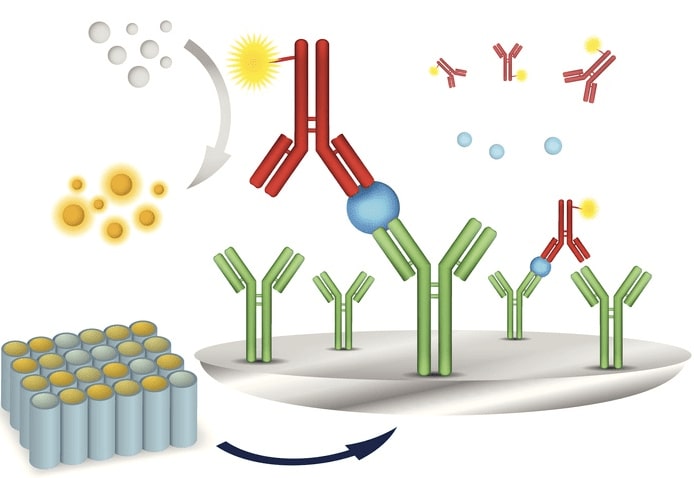
Immunoassay: Principle and Methods
In medical diagnostics, immunoassays are crucial in detecting and measuring various substances in a patient’s body. Immunoassays have become an indispensable tool for healthcare professionals, from detecting infectious diseases to monitoring hormone levels. This article will explore the principle behind immunoassays and the methods used for their implementation.
Introduction to Immunoassays
Immunoassay Analyzer is analytical techniques that rely on the interaction between antibodies and antigens. Antibodies are proteins the immune system produces in response to foreign substances (antigens) entering the body. The specificity of antibodies enables them to recognize and bind to particular antigens, forming the basis of immunoassays.
The Principle of Immunoassays
Understanding Antibodies and Antigens
Antibodies are Y-shaped proteins with specific binding sites, known as paratopes, which can bind to complementary regions on antigens. This antibody-antigen interaction is particular, like a lock-and-key model.
The Lock-and-Key Model
The lock-and-key analogy illustrates how an antibody (the key) fits perfectly into the antigen (the lock). When an antibody encounters its specific antigen, it forms an immune complex.
Types of Immunoassays
There are various types of immunoassays, including Enzyme-Linked Immunosorbent Assay (ELISA), Radioimmunoassay (RIA), Fluorescence Immunoassays, and Chemiluminescent Immunoassay (CLIA). Each method has its unique advantages and applications.
Enzyme-Linked Immunosorbent Assay (ELISA)
ELISA is a widely used immunoassay that relies on enzyme-labelled antibodies to detect and quantify antigens.
Direct ELISA
Direct ELISA directly detects antigens using an enzyme-labelled primary antibody. It offers simplicity but may have lower sensitivity.
Indirect ELISA
Indirect ELISA utilizes a primary antibody without an attached enzyme and a secondary enzyme-labelled antibody, providing increased sensitivity.
Sandwich ELISA
Sandwich ELISA captures the antigen between two antibodies – one immobilized on the surface and the other enzyme-labelled. It is susceptible and widely used in disease diagnosis.
Radioimmunoassay (RIA)
RIA utilizes radioactive tracers to measure the concentration of antigens based on competitive binding.
Competitive RIA
Competitive RIA involves competition between radioactive and non-radioactive antigens for binding to limited antibodies. The amount of radioactive antigen displaced is proportional to the antigen’s concentration.
Non-Competitive RIA
Non-Competitive RIA, known as ‘Saturation Analysis,’ measures the bound and free antigen fractions using a fixed amount of antibodies.
Fluorescence Immunoassays
Fluorescence Immunoassays utilize fluorescent molecules to quantify antigen-antibody interactions.
Fluorescence Polarization Immunoassay (FPIA)
FPIA measures changes in fluorescent polarization caused by antigen-antibody complex formation. It is rapid and suitable for high-throughput applications.
Time-Resolved Fluorescence (TRF) Immunoassay
TRF Immunoassay uses lanthanide compounds as fluorescent labels, offering improved sensitivity and reduced background noise.
Chemiluminescent Immunoassay (CLIA)
CLIA employs chemiluminescent molecules to produce light upon antigen-antibody binding, allowing sensitive detection.
Advantages and Limitations of Immunoassays
Immunoassays offer high specificity and sensitivity, enabling the detection of minute quantities of analytes. However, factors like interference and cost can limit their applications.
Immunoassays in Disease Diagnosis
Immunoassays are pivotal in diagnosing various diseases and conditions.
COVID-19 Rapid Antigen Testing
Rapid antigen tests, based on immunoassays, played a crucial role in diagnosing COVID-19 during the pandemic.
Pregnancy Testing
Home pregnancy tests are a typical example of immunoassays in action, detecting human chorionic gonadotropin (hCG) in urine.
Allergy Testing
Allergy tests employ immunoassays to identify allergen-specific IgE antibodies in the blood.
Cancer Markers
Immunoassays are instrumental in monitoring cancer progression by measuring tumour markers in the blood.
Immunoassays in Drug Testing
Immunoassays are widely used in drug testing for various substances.
Urine Drug Testing
Urine drug tests, using immunoassays, are commonly employed for workplace and forensic drug screening.
Saliva Drug Testing
Saliva drug tests are becoming popular due to their non-invasiveness and ease of sample collection.
Future Trends in Immunoassays
Advancements in technology are shaping the future of immunoassays.
Nanotechnology Integration
Nanotechnology is being integrated into immunoassays to enhance sensitivity and reduce assay time.
Lab-on-a-Chip Immunoassays
Lab-on-a-Chip technology offers miniaturized and portable immunoassay platforms for point-of-care testing.
How to Perform an Immunoassay
A step-by-step guide to conducting an immunoassay with attention to everyday challenges and troubleshooting.
Ensuring Accuracy and Reliability
Quality control measures and standardization are essential for accurate and reliable immunoassay results.
The Role of Automation
Automated immunoassay systems improve efficiency and reduce human errors in diagnostics laboratories.
A Look at Immunoassay Validation
The validation process ensures the accuracy and reliability of immunoassay results, adhering to FDA guidelines.
Conclusion
In conclusion, Immunoassay Analyzers have revolutionized medical diagnostics, providing healthcare professionals with powerful tools to detect and monitor various substances in the human body. From disease diagnosis to drug testing, immunoassays shape modern healthcare practices.
FAQs
- What is the principle behind immunoassays? Immunoassays rely on the specific interaction between antibodies and antigens, resembling a lock-and-key model.
- Which immunoassay is commonly used for COVID-19 testing? Rapid antigen tests based on immunoassays have been widely used for COVID-19 diagnosis.
- How are immunoassays used in cancer monitoring? Immunoassays measure tumour markers in the blood to monitor cancer progression.
- Are there any limitations to immunoassays? While immunoassays offer high sensitivity and specificity, interference and cost can limit their applications.
- What is the future of immunoassays? The future of immunoassays involves advancements in nanotechnology integration and lab-on-a-chip technology for point-of-care testing.


